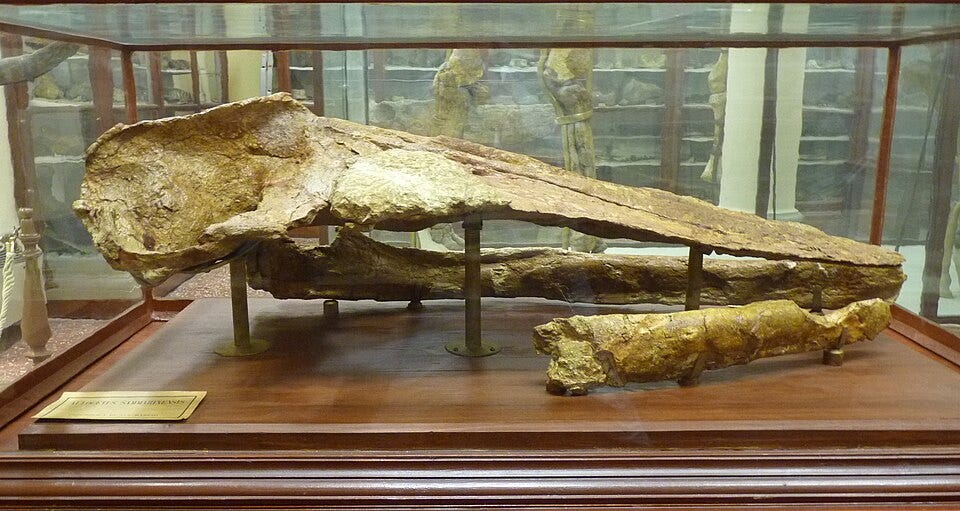The Mountain That Moved (and Had a Whale on Top)
The strange, sliding, sea-born story of San Marino’s mountain: Mount Titan
Here on Oldest Republic, we're talking geology today!
I know, I know.
What could be more thrilling than... a piece of rock?
Please don’t close the tab just yet!
I promise I’ll make it worth your while.
We’re about to talk about a mountain that snowboarded across Italy on a tectonic slipstream.
And a whale.
A whale on a mountain.
What about that?
Is that enough to keep you reading?
🪨 So, what’s the deal with Mount Titan?
Mount Titan (Monte Titano) rises suddenly out of the gentle hills around it - like a big rock that showed up uninvited.
There are no other peaks nearby. It just stands there on its own, clearly not blending in. Like your introvert friend at a house party.
It’s strange enough that people have come up with all kinds of theories to explain how it got there.
One early idea (now completely wrong) said that Titan slid here from the Alps, pushed along by a giant glacier during the Ice Age.
Sounds cool, but... no glaciers ever made it this far.
Another theory claimed it was once a coral island, like a fossilised reef. That didn’t hold up either.
So what do geologists actually believe?
🌊 A mountain born underwater
The most accepted theory today is much cooler, and actually makes sense.
Mount Titan, the mountain at the heart of San Marino, was formed during the last phase of the Tertiary Era, a time when the Earth was shaking constantly and new mountain ranges were rising from the sea like giant folds.
Back then - and we’re talking 15 to 20 million years ago - this whole area was underwater.
The rock that became Mount Titan was just one piece of a bigger mass on the ocean floor.
Thanks to earthquakes and tectonic shifts, it eventually broke off and started moving east, sliding slowly along a natural trench underwater; probably starting somewhere around today’s Liguria or Tuscany.
Yes, Titan moved - or rather, it was pushed - like a rock surfing slowly through ancient Italy.
Eventually, it came out of the sea along with other rocky neighbours like San Leo, La Verna, and Fumaiolo. All sharp, lonely hills that seem to share a common origin.
🐋 Oh, and about that whale
In 1897, close to the top of Mount Titan - about 600 metres above sea level - someone found a fossil.
Not a shell. Not a leaf.
A whale.
A whale from the Miocene era, to be exact.
First called Aulocetus sammarinensis, later renamed Titanocetus: which literally means “Titano whale.”
It’s now considered an early form of baleen whale, about six metres long, with a skull just over one metre.
And it’s named after San Marino’s mountain.
Let’s be honest:
How many mountains in the world have a whale fossil named after them?
That’s right. Just us.
🏔 From ancient sea to national symbol
Over millions of years, the sea disappeared, and the wind and rain shaped Mount Titan into what we see today: three pointy peaks; the same ones you’ll find on San Marino’s coins, our flag, and pretty much every souvenir.
But the next time you look up at Mount Titan, remember:
You’re not just seeing a lump of rock.
You’re looking at a former sea floor, a wandering mountain, and yes: a place that once hosted a whale.
Not bad for a chunk of limestone, right?





